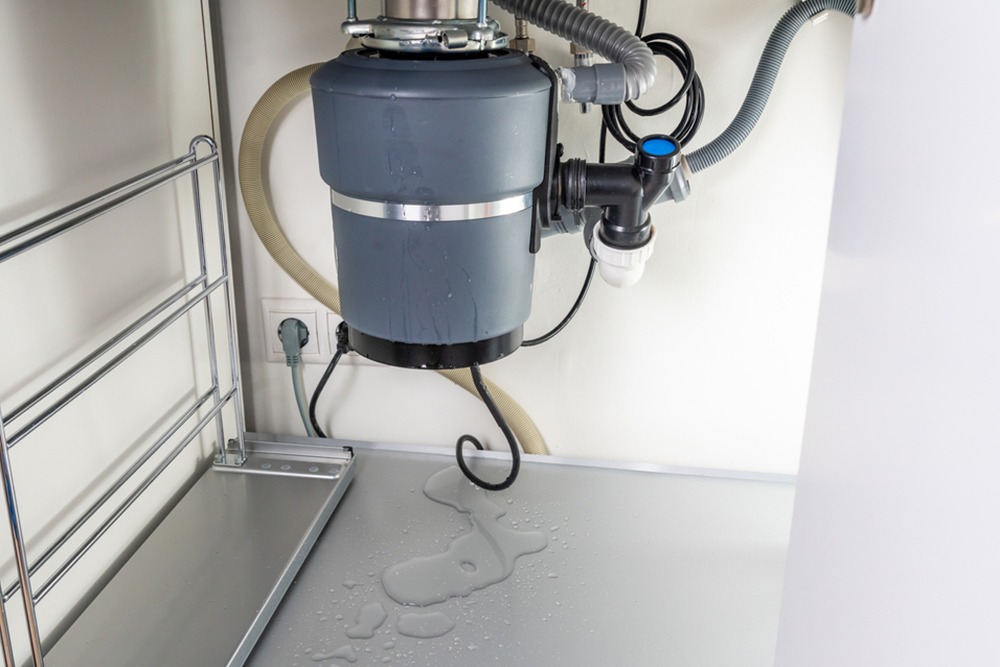Leading Methods for Resolving a Leak in Your Garbage Disposal
Leading Methods for Resolving a Leak in Your Garbage Disposal
Blog Article
We have discovered this article pertaining to Why Is My Garbage Disposal Leaking From the Bottom? below on the internet and believe it made sense to share it with you over here.

Waste disposal unit are crucial kitchen area home appliances that aid in throwing away food waste efficiently. Nevertheless, a dripping waste disposal unit can be a frustrating and unpleasant trouble to manage. Fortunately, numerous leaks can be fixed conveniently with a couple of basic steps. In this article, we will review exactly how to deal with a dripping garbage disposal properly.
Introduction
Garbage disposals are mounted under kitchen sinks and are developed to shred food waste right into smaller sized pieces, allowing it to go through the plumbing system quickly. While these tools are generally reliable, leaks can happen gradually as a result of damage, loose links, or damage to the device.
Typical Sources Of Leakages in Rubbish Disposals
Worn Seals and Gaskets
Seals and gaskets play a critical role in preventing water from dripping out of the waste disposal unit. In time, these parts can degrade, resulting in leakages around the disposal device.
Loose Connections
The links in between the garbage disposal and the pipes system can come to be loose with time, creating water to leak out during operation.
Cracks or Openings in the Disposal System
Physical damages to the garbage disposal, such as fractures or holes in the housing, can also lead to leaks.
Determining the Source of the Leak
Before attempting to take care of a dripping waste disposal unit, it is vital to determine the source of the leakage. This can generally be done through aesthetic examination or by performing simple tests.
Visual Examination
Evaluate the waste disposal unit device very carefully for any indications of water leak. Pay close attention to locations around seals, gaskets, and connection factors.
Examining for Leaks
One means to evaluate for leaks is by running water with the disposal unit and looking for any visible indicators of leak.
Tools and Products Needed for Taking Care Of a Leaking Waste Disposal Unit
Prior to starting the repair work procedure, collect the needed devices and products, consisting of a screwdriver, flexible wrench, plumber's putty, replacement seals or gaskets, and epoxy or patching product for fixing cracks or holes.
Step-by-Step Guide to Repairing a Dripping Garbage Disposal
Turn Off the Power
Before attempting any kind of repairs, guarantee that the power to the waste disposal unit unit is shut off to avoid the risk of electrical shock.
Find the Leakage
Identify the exact place of the leakage and determine the cause.
Tighten Connections
Utilize a wrench to tighten up any type of loose connections between the disposal unit and the plumbing system.
Change Seals or Gaskets
If the leakage results from worn seals or gaskets, remove the old components and replace them with brand-new ones.
Patching Cracks or Openings
For fractures or openings in the disposal device, use epoxy or an ideal patching product to secure the damaged area.
Evaluating the Waste Disposal Unit After Repair
When the repair is total, test the garbage disposal by running water through it to make sure that the leakage has been dealt with.
Preventive Maintenance Tips to Avoid Future Leaks
To stop future leakages, it is important to execute regular maintenance on your waste disposal unit. This consists of maintaining it tidy, staying clear of placing non-food items or hard items down the disposal, and regularly checking for leaks or other problems.
Conclusion
To conclude, taking care of a dripping garbage disposal is a fairly straightforward procedure that can be completed with fundamental tools and products. By adhering to the steps described in this write-up and practicing preventative maintenance, you can maintain your waste disposal unit in good working problem and prevent pricey repair services in the future.
HERE’S HOW TO FIX YOUR GARBAGE DISPOSAL
WHAT TO DO IF SOMETHING IS STUCK IN YOUR GARBAGE DISPOSAL
If the impeller won’t turn, there’s probably something stuck in the disposal. It could be a steak bone or peach pit, although plumbers report pulling all sorts of inappropriate objects out of disposals, such as bottle caps or aluminum foil. Make sure power to the disposal is off, and look inside to see if you can see the source of the jam.
Never stick your fingers in a disposal. Pull out anything you see with tongs or pliers.
If the disposal still won’t work, it may be time to call a plumber or consider buying a new disposal. GEM Plumbing & Heating is here for all of your garbage disposal needs.
WHAT TO DO IF YOUR GARBAGE DISPOSAL DRAIN IS CLOGGED
Take everything out from underneath your sink and put a bucket or other container under your disposal to catch any water that drains out. Disconnect your disposal from the power supply. If it’s plugged into a wall outlet, unplug it. If it’s hardwired into an electrical box, go to the electrical panel and turn off the breaker for the disposal. Pour ¼ cup of baking soda into the drain, followed by ½ cup of white vinegar. Give the solution a few minutes to fizz and do its work. Look into the disposal with a flashlight to see if you can see an object that might be causing the clog. If you see it, remove it using tongs or pliers. MORE TIPS ON DEALING WITH A CLOGGED GARBAGE DISPOSAL
Never use drain cleaner in a garbage disposal. It can damage the plastic parts inside the disposal. You can also be splashed with the caustic liquid while working to clear the clog. Beware! Never stick your fingers into a garbage disposal. Trust us — not a good idea. In many instances, your dishwasher drains through your garbage disposal. This allows the disposal to grind any large food particles that may be drained out of your dishwasher. There are some jurisdictions, however, where the plumbing code prohibits such a connection. WHAT TO DO WHEN YOUR DISHWASHER DRAINS THROUGH THE DISPOSAL
Run some water in the sink so your plunger has at least a ½-inch of water to create a seal and plunge vigorously up and down several times. You may need to repeat this several times. Run hot water down the drain to clear any residue that remains.

I am just very fascinated by Tips on Fixing a Leaking Garbage Disposal and I am assuming you enjoyed the blog entry. Do you know anybody else who is looking into the niche? Be sure promote it. Thanks a lot for taking the time to read it.
Call Today Report this page